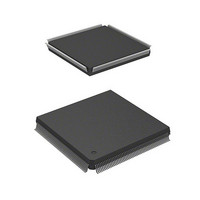HD6417750RF240DV Renesas Electronics America, HD6417750RF240DV Datasheet - Page 622

HD6417750RF240DV
Manufacturer Part Number
HD6417750RF240DV
Description
MPU 3V 16K I-TEMP,PB-FREE 208-QF
Manufacturer
Renesas Electronics America
Series
SuperH® SH7750r
Datasheet
1.D6417750RBP240DV.pdf
(1164 pages)
Specifications of HD6417750RF240DV
Core Processor
SH-4
Core Size
32-Bit
Speed
240MHz
Connectivity
EBI/EMI, FIFO, SCI, SmartCard
Peripherals
DMA, POR, WDT
Number Of I /o
28
Program Memory Type
ROMless
Ram Size
48K x 8
Voltage - Supply (vcc/vdd)
1.4 V ~ 1.6 V
Oscillator Type
External
Operating Temperature
-40°C ~ 85°C
Package / Case
208-QFP
Lead Free Status / RoHS Status
Lead free / RoHS Compliant
Eeprom Size
-
Program Memory Size
-
Data Converters
-
Available stocks
Company
Part Number
Manufacturer
Quantity
Price
Company:
Part Number:
HD6417750RF240DV
Manufacturer:
HITACHI
Quantity:
7 287
- Current page: 622 of 1164
- Download datasheet (7Mb)
Section 13 Bus State Controller (BSC)
13.3.11 Bus Arbitration
This LSI is provided with a bus arbitration function that grants the bus to an external device when
it makes a bus request.
There are three bus arbitration modes: master mode, partial-sharing master mode, and slave mode.
In master mode the bus is held on a constant basis, and is released to another device in response to
a bus request. In slave mode the bus is not held on a constant basis; a bus request is issued each
time an external bus cycle occurs, and the bus is released again at the end of the access. In partial-
sharing master mode, only area 2 is shared with external devices; slave mode is in effect for area
2, while for other spaces, bus arbitration is not performed and the bus is held constantly. The area
in the master mode chip to which area 2 in the partial-sharing master mode chip is allocated is
determined by an external circuit.
Master mode and slave mode can be specified by the external mode pins. Partial-sharing master
mode is entered from master mode by means of a software setting. See Appendix C, Mode Pin
Settings, for the external mode pin settings. In master mode and slave mode, the bus goes to the
high-impedance state when not being held. In partial-sharing master mode, the bus is constantly
driven, and therefore an external buffer is necessary for connection to the master bus. In master
mode, it is possible to connect an external device that issues bus requests instead of a slave mode
chip. In the following description, an external device that issues bus requests is also referred to as
a slave.
This LSI has two internal bus masters: the CPU and the DMAC. When synchronous DRAM or
DRAM is connected and refresh control is performed, refresh requests constitute a third bus
master. In addition to these are bus requests from external devices in master mode. If requests
occur simultaneously, priority is given, in high-to-low order, to a bus request from an external
device, a refresh request, the DMAC, and the CPU.
To prevent incorrect operation of connected devices when the bus is transferred between master
and slave, all bus control signals are negated before the bus is released. When mastership of the
bus is received, also, bus control signals begin driving the bus from the negated state. Since
signals are driven to the same value by the master and slave exchanging the bus, output buffer
collisions can be avoided.
Bus transfer is executed between bus cycles.
When the bus release request signal (BREQ) is asserted, this LSI releases the bus as soon as the
currently executing bus cycle ends, and outputs the bus use permission signal (BACK). However,
bus release is not performed during multiple bus cycles generated because the data bus width is
smaller than the access size (for example, when performing longword access to 8-bit bus width
Rev.7.00 Oct. 10, 2008 Page 536 of 1074
REJ09B0366-0700
Related parts for HD6417750RF240DV
Image
Part Number
Description
Manufacturer
Datasheet
Request
R

Part Number:
Description:
KIT STARTER FOR M16C/29
Manufacturer:
Renesas Electronics America
Datasheet:

Part Number:
Description:
KIT STARTER FOR R8C/2D
Manufacturer:
Renesas Electronics America
Datasheet:

Part Number:
Description:
R0K33062P STARTER KIT
Manufacturer:
Renesas Electronics America
Datasheet:

Part Number:
Description:
KIT STARTER FOR R8C/23 E8A
Manufacturer:
Renesas Electronics America
Datasheet:

Part Number:
Description:
KIT STARTER FOR R8C/25
Manufacturer:
Renesas Electronics America
Datasheet:

Part Number:
Description:
KIT STARTER H8S2456 SHARPE DSPLY
Manufacturer:
Renesas Electronics America
Datasheet:

Part Number:
Description:
KIT STARTER FOR R8C38C
Manufacturer:
Renesas Electronics America
Datasheet:

Part Number:
Description:
KIT STARTER FOR R8C35C
Manufacturer:
Renesas Electronics America
Datasheet:

Part Number:
Description:
KIT STARTER FOR R8CL3AC+LCD APPS
Manufacturer:
Renesas Electronics America
Datasheet:

Part Number:
Description:
KIT STARTER FOR RX610
Manufacturer:
Renesas Electronics America
Datasheet:

Part Number:
Description:
KIT STARTER FOR R32C/118
Manufacturer:
Renesas Electronics America
Datasheet:

Part Number:
Description:
KIT DEV RSK-R8C/26-29
Manufacturer:
Renesas Electronics America
Datasheet:

Part Number:
Description:
KIT STARTER FOR SH7124
Manufacturer:
Renesas Electronics America
Datasheet:

Part Number:
Description:
KIT STARTER FOR H8SX/1622
Manufacturer:
Renesas Electronics America
Datasheet:

Part Number:
Description:
KIT DEV FOR SH7203
Manufacturer:
Renesas Electronics America
Datasheet:











